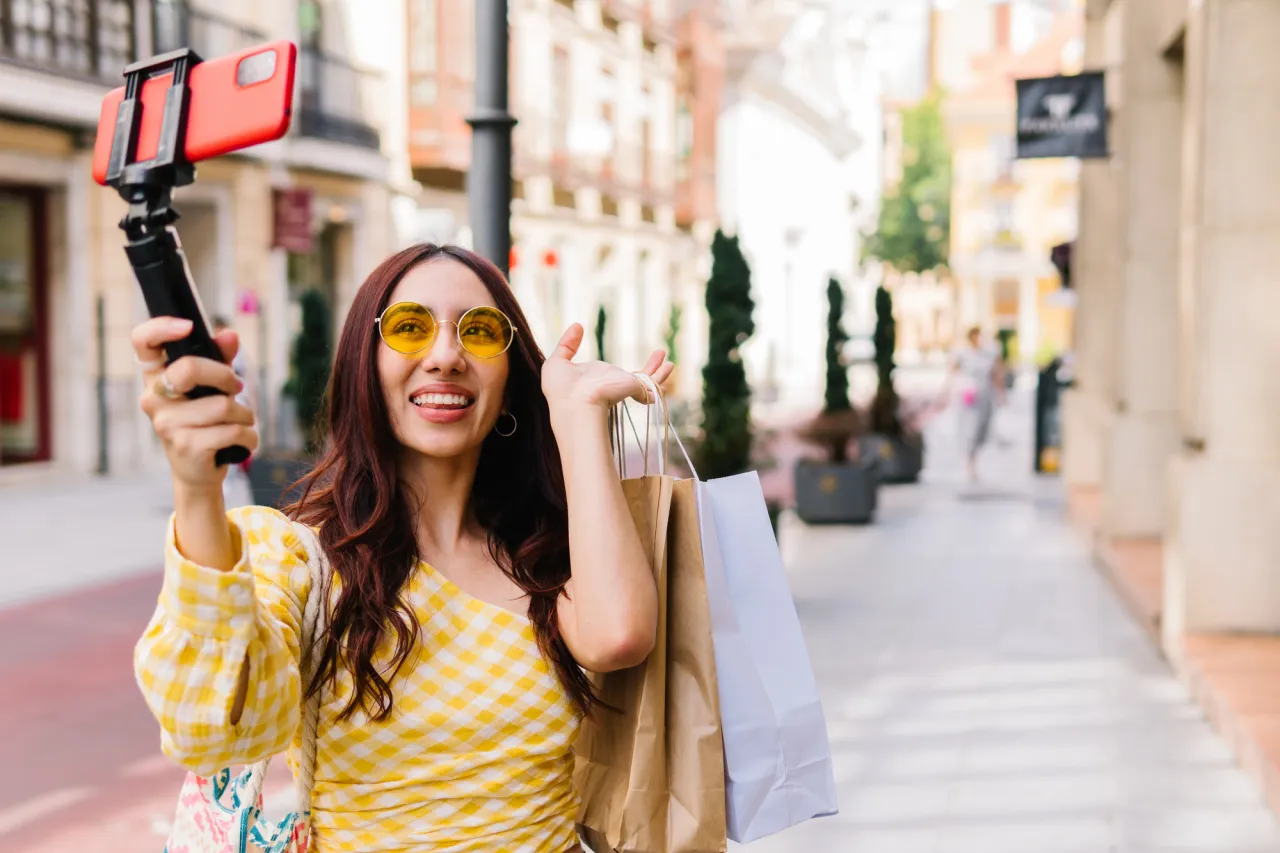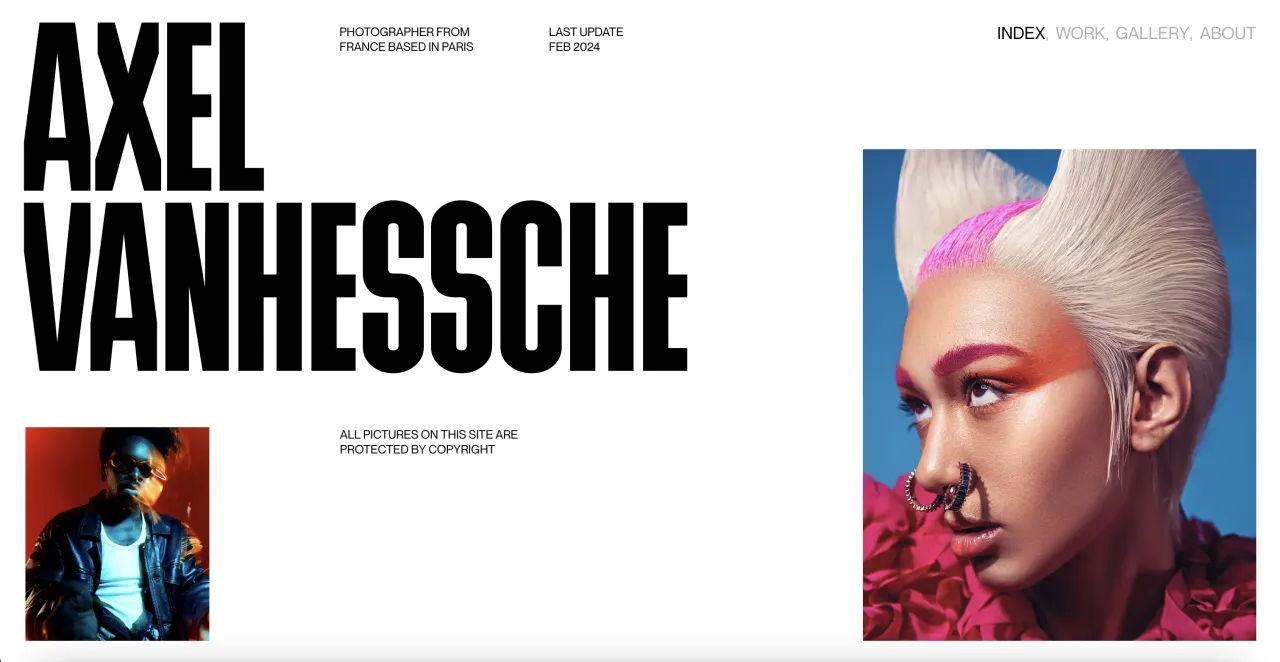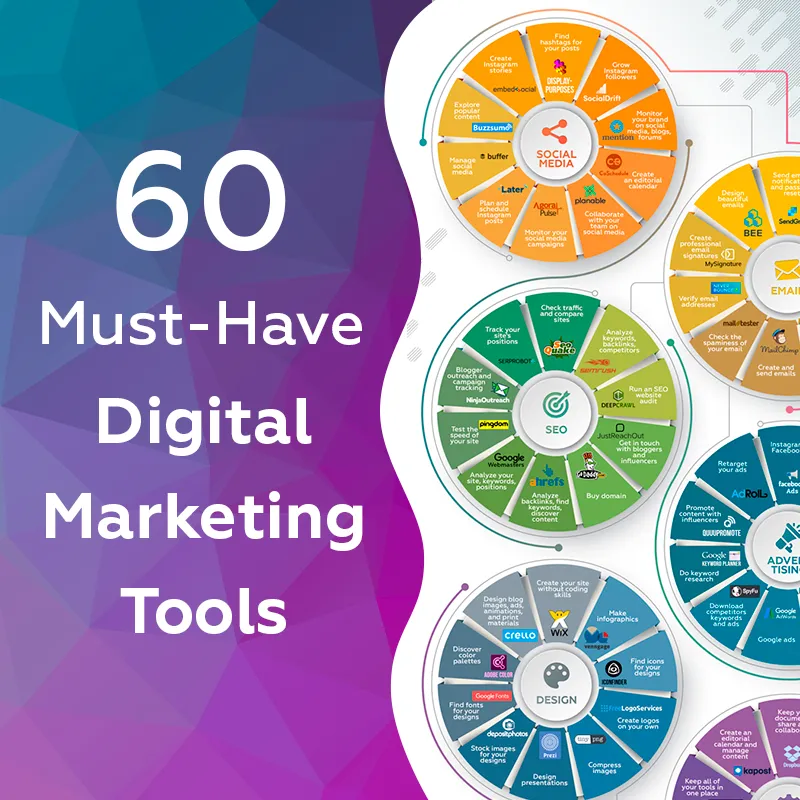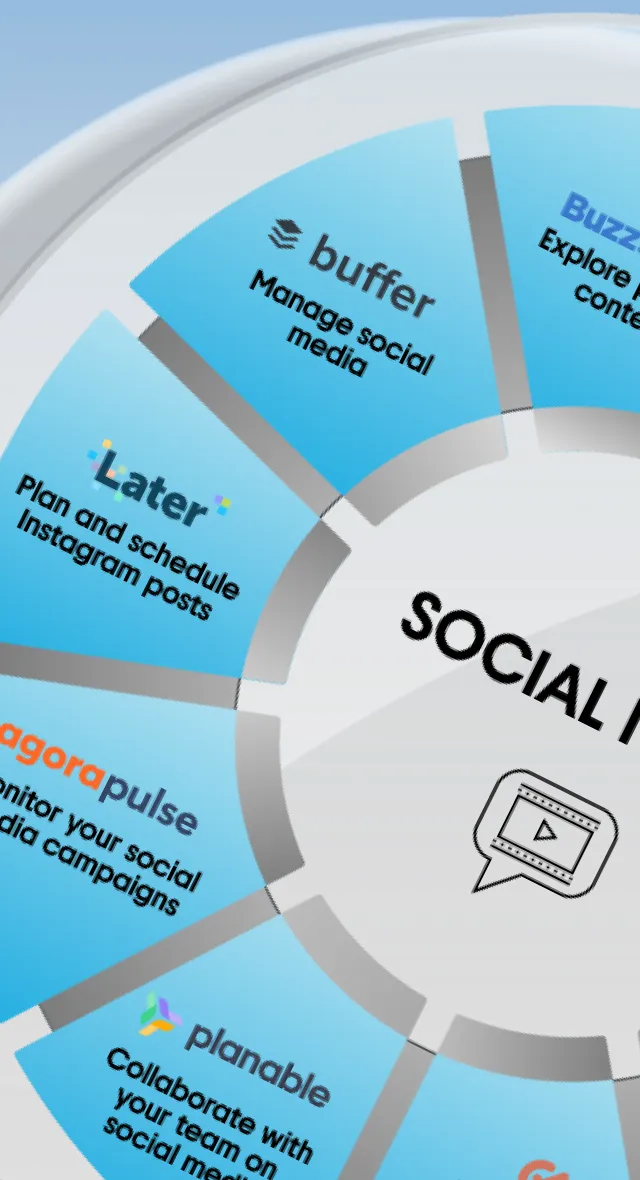From Hype to Honesty: How Deinfluencing is Changing Consumer Culture
Have you ever felt like social media is so flooded with ads and recommended posts that it’s hard to see content from the people you follow? At some point, platforms like Instagram or TikTok turned from spaces for communication and self-expression into marketplaces that constantly push users to buy a bunch of products, from cosmetics and supplements to fancy gadgets.
This unhealthy incentive for overconsumption and fake influencer reviews has given rise to the trend of deinfluencing, which promotes conscious buying behavior and a refusal of the unnecessary. Is it a threat to brands? Deinfluencing creates both challenges and opportunities for businesses. Take a closer look at the causes and nature of this movement to figure out how to adjust to the new reality.
How it all started: the rise of influencing and influencer marketing
Influencing was born in the early 2000s when personal blogs began to grow, but the phenomenon as we know it took shape with the emergence and rise of YouTube and Instagram. These platforms spawned a culture of online reviews in which users shared their impressions of various products. Those who were the best at it managed to gain a significant audience and become influencers, i.e. experts in a particular niche whose opinions are trusted, impacting purchasing decisions.
Influencer content proved highly efficient since users found it more authentic and engaging than traditional advertising. Personal connection has become a key factor in consumer behavior, as 88% of shoppers have shown that they prefer recommendations from friends or people they trust to conventional marketing approaches. Eager for new opportunities, brands began to collaborate with influencers, and that’s how influencer marketing was born.
In the second half of the 2010s, influencer partnerships and sponsored content boomed, and businesses, inspired by the success, began investing millions in it. As a result, the market grew from $1.7 billion in 2015 to an impressive $35.5 billion in 2025. However, the pitfalls of influencer marketing have gradually become exposed.
As influencers actively collaborated with brands, their content no longer focused on honest reviews but on promoting products, and not always of the appropriate quality. As a result, trust suffered, the very basis on which the relationship between influencers and their audiences is built. Authentic content turns into salesy content and loses its value for users. And this casts a shadow over influencing in general.
Today, only 15% of people trust social media influencers, about the same as politicians. According to another study, 47% (three points more than Americans) of Europeans aged 13 to 39 say that influencers no longer have the power they once had. Has this consumer trend been driven by deinfluencing? Let’s find out.
What is deinfluencing: the anti-haul era
Deinfluencing is a trend and movement on social media (born on TikTok) that encourages people not to buy hyped products, to be critical of any advertising, and to refuse overconsumption. Today, videos with the hashtag deinfluencing have millions of views on TikTok, which confirms the relevance of this concept for a wide audience. While influencers show only the benefits of products in their posts, deinfluencers openly talk about flaws and consequences of use.
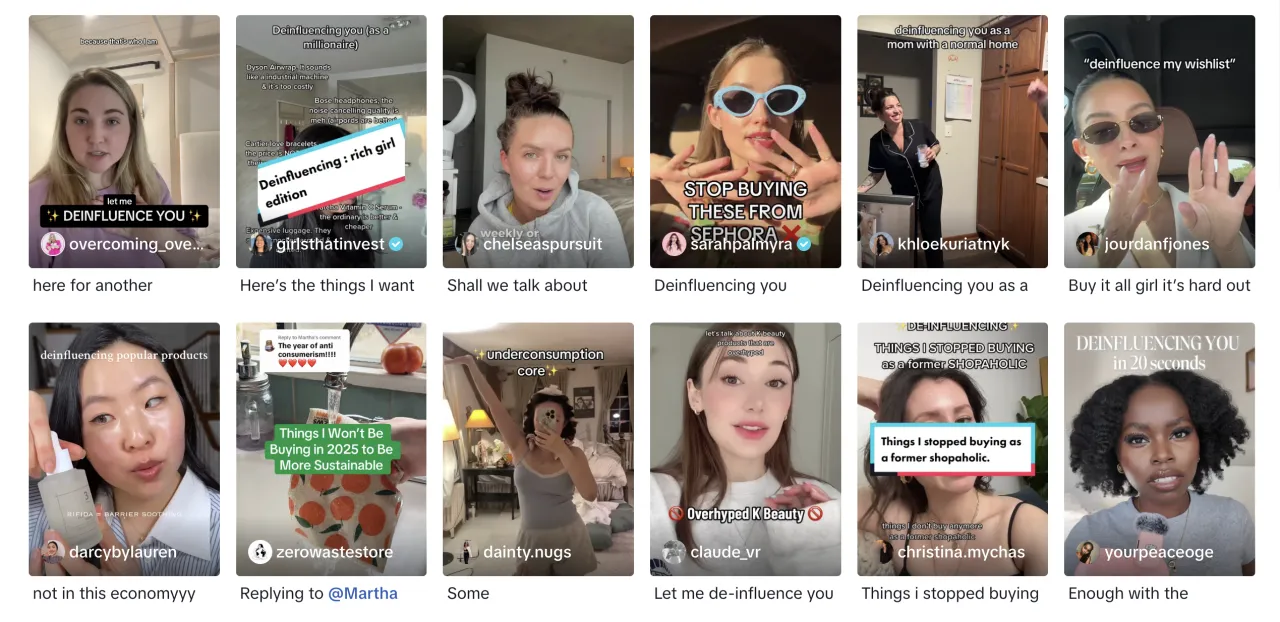
Source: TikTok
Although content that discourages the purchase of unnecessary products has appeared on social media before, the last straw that led to the deinfluencing boom was mascaragate. In January 2023, beauty influencer Mikayla Nogueira posted a video on TikTok as part of a partnership with L’Oreal, where she reviewed the brand’s new mascara. She used the popular before-and-after format to show the impressive results of the product. However, users accused her of cheating and using false eyelashes.
@mikaylanogueira THESE ARE THE LASHES OF MY DREAMS!! @lorealparisusa never lets me down 😭 #TelescopicLift #LorealParisPartner #LorealParis @zoehonsinger
This video has received tens of millions of views and thousands of comments, but most importantly, it motivated many users to debunk the lies of influencers and the constant stimulation of consumerism. This is how deinfluencing has evolved into a powerful movement with millions of supporters. “TikTok made me buy it” videos with annoying advertisements for often unnecessary and even low-quality products were replaced by “Let me deinfluence you” posts.
The trend of underconsumption core has become a logical extension of deinfluencing. This is a philosophy that pays tribute to sustainability and motivates customers to appreciate what they already have, instead of constantly striving to buy something new: repairing things over replacing them, reducing waste, and generally striving for valuable experiences rather than the illusory pleasure of possession. Underconsumption core challenges the idea that happiness is related to material goods, while also teaching us to prioritize the quality and durability of things. This trend motivates people to step back, reconsider their priorities, and realize the value of moderation.

The core principles of deinfluencing
1. Refusal of excessive consumption
Deinfluencing doesn’t condemn buying, but only calls for a change in attitude. It encourages people to be conscious about their purchases and not to fall for the hype of products, despite how tempting and helpful they may be in promotional videos. Deinfluencing means buying no more than you really need. It’s unlikely that a mini karaoke speaker or a portable air duster will become indispensable items and significantly improve quality of life.
2. Mindful approach
Deinfluencing challenges aggressive consumerism, which encourages the endless acquisition of goods and drives people into an eternal circle where they buy, get quick satisfaction, and then look for something else to buy in search of the lost feeling. The underconsumption movement emphasizes that the constant desire to possess is exhausting and distracts from what is really important. Instead, it motivates people to focus on experiences, personal development, and intangible sources of fulfillment.
3. Reducing waste
Deinfluencers address sustainability by criticizing overconsumption and the brands and influencers who encourage it for environmental impact. While deinfluencing opposes unnecessary purchases, it also promotes waste reduction and eco-initiatives such as recycling, repairing old items, DIY, secondhand and appreciating what you already have instead of buying new.
4. Authenticity and honesty
Since deinfluencing was triggered by the crisis of trust and insincerity, one of the main values of this trend’s followers is honesty. The movement has become a manifestation of fatigue from unrealistic, perfect images and unmet expectations. Today consumers want to see genuine and candid reviews, especially when they involve influencers.
5. Emphasizing the “No”
By highlighting products that they believe are overhyped or unnecessary, deinfluencers encourage other users to say no to unhealthy buying habits and make more ethical decisions. This approach resonates particularly well with millennials and Generation Z, who value social and environmental consciousness.
Why deinfluencing is criticized
You would assume there is nothing wrong with such a healthy and conscious trend as deinfluencing. However, it also has many critics. First of all, deinfluencers are essentially the same as influencers, because they impact consumer purchasing decisions. And not all so-called trend advocates really discourage buying — instead, they may offer other products instead of hyped ones, i.e. undermine the foundations of the movement they supposedly represent.
Deinfluencers are also very often judgmental in their assessments and may use emotional tactics to criticize products or brands based purely on their own impressions rather than balanced opinions. This kind of cancel culture is especially harmful for small businesses, which are very sensitive to feedback and word-of-mouth marketing.
In addition, deinfluencers can trigger the hype cycle as traditional influencers by focusing on products (no matter the context) instead of motivating people to buy less. And just as influencers can push people to make purchases they don’t need, deinfluencers can make them reject products not because they are unnecessary, but because they are trendy to hate. In this manifestation, deinfluencing becomes influencing, but just in a different wrapper.
What can brands learn from the deinfluencing trend?
Will deinfluencing put a stop to influencers? Hardly. In the US alone, 86% of marketers plan to partner with influencers this year. However, the rise of this trend reflects a shift in audience demands, both in terms of their own purchases and content from brands. Let’s look at what lessons businesses can learn from deinfluencing.
1. Prioritize transparency
The main takeaway from deinfluencing is that honesty and transparency should be the basis of communication. This includes both the characteristics of products and the impressions and opinions of the influencers promoting them. Don’t promise being wowed if it won’t happen or if it has to be faked, like in mascaragate. Rely on facts and evidence. This is the safest way to earn and maintain trust.
2. Rethink influencer collaborations
Review your influencer marketing strategies by analyzing the effectiveness of previous partnerships and the approaches used. Maybe it’s time to step away from overwhelmingly positive reviews and, instead, give influencers the opportunity to share more balanced opinions that address both the benefits and drawbacks of your product while still being complementary. Such feedbacks don’t push products, but rather inform, leaving users free to make a choice.
3. Choose influencers wisely
The rule that ‘the bigger the influencer’s audience, the better’ doesn’t work, because part of their followers may be just bots. Moreover, large audiences don’t lead to high engagement. Instead, it’s better to focus on nano- and micro-influencers who have smaller but much more loyal and engaged audiences. Also, don’t neglect to check the reputation of a chosen candidate and make sure that your values match.
4. Embrace genuine connections
Be sincere in your relationships with customers. Don’t try to appear perfect, but rather display the human face of your brand. For example, share behind-the-scenes content that captures the production process or work on a collaboration with an influencer. Post UGC where real users give their impressions of your brand’s products. Such content has a stable level of trust among audiences.
To sum up
Modern consumers, tired of aggressive marketing from influencers and unrealistic promises from brands, are becoming more conscious and avoiding impulse purchases. They welcome trends such as deinfluencing and underconsumption core, which manifest a thoughtful approach to consuming and a refusal of excesses. However, along with the transformation of their own habits, users expect changes from brands. Respond to this demand by prioritizing honesty and sincerity in communication and product promotion. Reconsider your old approaches to build genuine relationships with customers and build trust.
Other articles you might find interesting
Crafting a Powerful Content Marketing Strategy for 2025
Digital Marketing Trends 2025: The Future of Advertising, AI, and Social Media Engagement
Do You Really Need Instagram Influencer Marketing?
Top 6 Virtual Influencers to Follow or Invite for Collaboration

